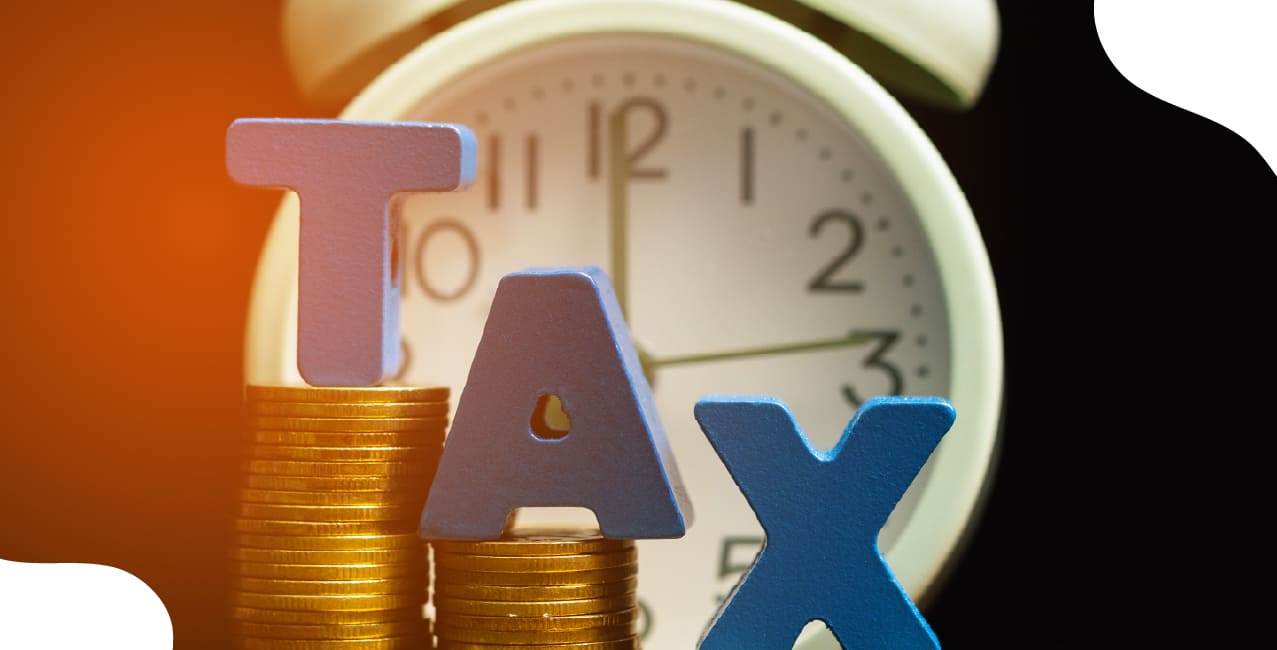_Of_Income_Tax_Act.jpg)
Author
LoansJagat Team
Read Time
6 Min
19 Sep 2025
Section 143(2) of Income Tax Act – Scrutiny Notice Explained
Key Takeaways
- Under Section 143(2) of the Income Tax Act, the Income Tax Department reviews your filed return.
- They check for errors, mismatches, or missing details in the return.
- After review, they may accept your return as it is or make changes to your tax liability.
Section 143(2) of Income Tax Act empowers the Income Tax Department to scrutinise your return to verify if the deductions, exemptions, losses, or income declared are accurate. This scrutiny ensures that taxpayers are not under-reporting their income or over-claiming deductions.
It is a follow-up to your filed return under Section 139 or in response to Section 142(1). In essence, it’s a notice for scrutiny assessment, an official way for the department to check whether your return is “okay” or has discrepancies.
Bonus point: Many assume Section 143(2) of Income Tax Act means a full tax audit, but it’s actually a limited scrutiny. The tax officer only checks specific details or discrepancies in your return, not a complete examination.
Why Do You Get a Notice Under Section 143(2) of Income Tax Act?
You may receive a Section 143(2) of Income Tax Act notice if:
- The department suspects under-reporting of income
- There is a mismatch in Form 26AS/AIS vs ITR
- You claimed excessive deductions or losses that look suspicious
- TDS claims do not match employer filings or Form 16
- You were randomly selected under the Computer-Aided Scrutiny Selection (CASS) system
Rajeev had claimed ₹220,000 in HRA exemption and ₹350,000 as home loan interest, which may have triggered the notice. Sometimes, even an error in reporting small interest income from savings accounts or FDs can cause a discrepancy flag.
Types of Scrutiny Under Section 143(2) of Income Tax Act
Scrutiny under Section 143(2) of Income Tax Act can be classified into the following types:
Rajeev’s notice mentioned “Limited Scrutiny Mismatch in TDS Credit.” This meant the department was only interested in verifying a specific point in his return, not every single detail.
Timeline: When and How You Receive Section 143(2) of Income Tax Act
Section 143(2) of Income Tax Act prescribes a specific timeframe within which this notice can be issued. As per law:
- The notice must be issued within 3 months of the end of the financial year in which the return is filed.
- For returns filed in AY 2024–25 (FY 2023–24), the deadline to serve the notice under 143(2) is 30th June 2025.
The Income Tax Department follows strict timelines for issuing a notice under Section 143(2). The table below explains the sequence with an example.
This timeline shows that the notice must always be issued within three months from the end of the financial year in which the return is filed.
Section 143(2) of Income Tax notices are typically delivered by email or made available on the Income Tax e-Filing Portal under the e-Proceedings tab.
What Should You Do After Receiving Section 143(2) of Income Tax Act?
Here’s how you should respond to section 143(2) of Income Tax notice:
- Don’t Panic: The notice isn’t an allegation of wrongdoing. It’s a routine query.
- Read the Notice Carefully: Understand what aspect of your return is under scrutiny, whether it’s TDS, HRA, deductions, capital gains, or business income.
- Check Form 26AS and AIS: These documents help reconcile income and TDS figures with your return.
- Respond Promptly: Submit your response and documents online through the Income Tax Portal under the e-Proceedings section.
- Attach Supporting Documents: Upload proofs such as Form 16, salary slips, rent receipts, bank statements, and investment proofs.
- Seek Expert Advice: For full scrutiny or complex cases, it is advisable to consult a CA.
Rajeev, after speaking to his employer and CA, realised that the Q4 TDS entry by his company had not been reflected in Form 26AS by the time he filed. He uploaded his salary slips and Form 16 as evidence.
Bonus Tip: Taxpayers can often respond to notices under Section 143(2) electronically through the income tax e-filing portal, which helps avoid in-person meetings with tax officers.
Mode of Communication: E-Assessment System
With the implementation of the Faceless Assessment Scheme, communication is now electronic. There are no in-person meetings or visits to the income tax office.
This system enhances transparency, reduces human discretion, and ensures a documented audit trail.
What Happens After You Respond?
Once you submit your response:
- The Assessing Officer will verify the documents
- You may receive a follow-up notice under Section 142(1) if more details are required
- If satisfied, the AO passes a final order under Section 143(3) either accepting your return or proposing adjustments
In Rajeev’s case, the AO found the Q4 TDS reflected late and matched it with the salary proof. After a few weeks, the portal displayed status as “Scrutiny Complete – No Variation.”
Consequences of Ignoring Section 143(2) of Income Tax Act Notice
Failing to respond to a 143(2) notice can result in:
- Best Judgement Assessment under Section 144, where the AO assesses tax without your input
- Levy of penalties or prosecution
- Blocking of tax refunds or adjustments
Hence, timely and correct responses are critical to avoid harsh consequences.
Example:
Here are some examples of taxpayers receiving 143(2) notices:
- Mismatch in Salary Income: An employee claimed ₹20,000 more in salary than shown in Form 16. Result: Limited Scrutiny.
- Large LTCG Claims: A salaried individual claimed ₹5,00,000 capital gains exemption without valid demat proof.
- High Cash Deposits: A self-employed person deposited ₹15,00,000 in cash without declaring matching income.
In all cases, 143(2) notices were issued and documents were demanded.
How to Prepare and Prevent Future Scrutiny?
To reduce your chances of being selected for scrutiny:
- Match your ITR with Form 26AS and AIS
- Disclose all bank interest and capital gains properly
- Upload the correct income and deduction proofs
- Avoid speculative deductions that lack evidence
- File returns on time and maintain a clean filing history
Rajeev now keeps a digital folder with all tax proofs, tracks AIS monthly, and files before July to stay safe.
Conclusion
Receiving a Section 143(2) of Income Tax Act notice may sound scary, but it's just part of the tax department's routine scrutiny mechanism. Most cases are resolved smoothly when documents are provided correctly and on time.
As Rajeev learned, being organised and calm is key. The new faceless assessment system has made it easier, faster, and more transparent. If your return is genuine and accurate, there’s no need to worry. It’s just a way for the taxman to verify nothing more.
FAQs
Q1. Is Section 143(2) of the Income Tax Act a penalty notice?
No. It is not a penalty notice; it is only issued to review and verify your return.
Q2. What is the difference between Section 143(1) and Section 143(2) of the Income Tax Act?
143(1) is an intimation; 143(2) is a scrutiny notice.
Q3. How long does the scrutiny process take in Section 143(2) of the Income Tax Act?
It varies but is typically resolved within 6 months to a year.
Q4. What happens if I do not provide correct or complete documents?
The assessing officer may send another notice or make additions to your taxable income.
Q5. Do I always need a professional to handle Section 143(2) cases?
Not in every case. For limited scrutiny, many taxpayers manage it on their own, but for detailed scrutiny, professional help is advisable.
Other News Pages | |||
About the Author

LoansJagat Team
‘Simplify Finance for Everyone.’ This is the common goal of our team, as we try to explain any topic with relatable examples. From personal to business finance, managing EMIs to becoming debt-free, we do extensive research on each and every parameter, so you don’t have to. Scroll up and have a look at what 15+ years of experience in the BFSI sector looks like.

Quick Apply Loan
Subscribe Now
Related Blog Post

LoansJagat Team • 22 Sep 2025
_of_Income_Tax_Act.jpg)
LoansJagat Team • 22 Sep 2025

LoansJagat Team • 22 Sep 2025